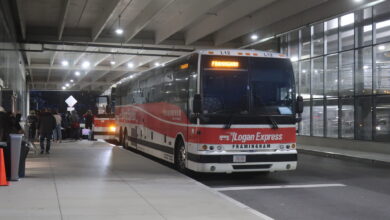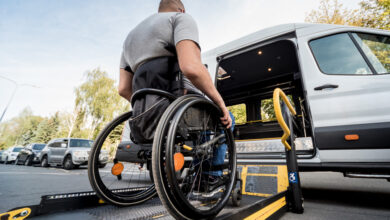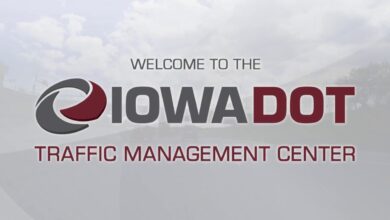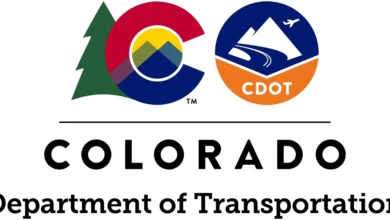Metropolitan Transportation Authority: Navigating Urban Mobility

Outline
- Introduction
- Definition of the Metropolitan Transportation Authority (MTA)
- Significance of MTA in urban mobility
- History of MTA
- Establishment and early years
- Major milestones and developments
- Role and Responsibilities
- Managing public transportation
- Infrastructure maintenance and development
- Challenges Faced by MTA
- Financial constraints
- Aging infrastructure and modernization issues
- Technological Innovations in Transportation
- Integration of technology in MTA operations
- Improving user experience through tech advancements
- Environmental Initiatives
- MTA’s efforts towards sustainability
- Promoting eco-friendly transportation alternatives
- Public Opinion and Criticisms
- Commuter experiences and feedback
- Addressing common criticisms and concerns
- MTA and Economic Impact
- Contribution to local economies
- Job creation and economic development
- COVID-19 Impact on MTA
- Challenges faced during the pandemic
- Adaptations and strategies for recovery
- Future Plans and Developments
- Expansion projects and future goals
- Anticipated improvements in MTA services
- Comparison with Other Transport Authorities
- Contrasting MTA with similar organizations worldwide
- Learning from successful models
- Accessibility and Inclusivity
- MTA’s efforts to ensure accessibility for all
- Addressing concerns of differently-abled individuals
- Safety Measures and Regulations
- MTA’s commitment to passenger safety
- Compliance with industry regulations
- Community Engagement and Feedback
- Strategies for involving the public in decision-making
- Incorporating feedback for better services
- Conclusion
- Recap of MTA’s significance
- Looking ahead to a sustainable and efficient future
Article
The Metropolitan Transportation Authority (MTA) stands as a testament to the evolution of urban transportation. Established with the goal of providing efficient and reliable public transportation, MTA has played a crucial role in shaping the mobility landscape of metropolitan areas. Let’s delve into the history, challenges, innovations, and future prospects of this integral organization.
1. Introduction
The Metropolitan Transportation Authority, commonly known as MTA, is a public agency responsible for managing the public transportation network in metropolitan regions. From buses and subways to commuter trains, MTA is the lifeline that keeps urban centers connected.
2. History of MTA
Founded in [insert year], MTA’s journey has been marked by significant milestones. From its inception to key developments over the years, understanding the historical context provides insights into its growth.
3. Role and Responsibilities
At the core of MTA’s mission is the efficient management of public transportation, ensuring that millions of commuters reach their destinations seamlessly. Additionally, MTA is actively involved in infrastructure development and maintenance to enhance the overall transportation experience.
4. Challenges Faced by MTA
Despite its critical role, MTA faces challenges like financial constraints and the need for modernization. Exploring these challenges is crucial to understanding the dynamics of managing such a vast transportation network.
5. Technological Innovations in Transportation
MTA has embraced technological advancements to streamline operations and improve user experience. From digital ticketing systems to real-time tracking, technology plays a pivotal role in enhancing the efficiency of MTA services.
6. Environmental Initiatives
In response to the growing concern for the environment, MTA has undertaken initiatives to promote sustainability. This includes the integration of eco-friendly transportation alternatives and a commitment to reducing its carbon footprint.
7. Public Opinion and Criticisms
Commuter experiences shape public opinion, and MTA has not been without criticisms. Addressing these concerns and actively seeking feedback is essential for continuous improvement.
8. MTA and Economic Impact
Beyond its role in transportation, MTA significantly contributes to local economies. Job creation, economic development, and the overall impact on urban landscapes underscore the broader implications of MTA’s operations.
9. COVID-19 Impact on MTA
The global pandemic presented unprecedented challenges for public transportation. Examining how MTA navigated these challenges and its strategies for recovery provides valuable insights.
10. Future Plans and Developments
Looking ahead, MTA has ambitious plans for expansion and improvements. Exploring these future developments sheds light on the organization’s vision for the urban transportation landscape.
11. Comparison with Other Transport Authorities
Contrasting MTA with similar organizations globally allows us to identify best practices and areas for improvement. Learning from successful models contributes to MTA’s ongoing evolution.
12. Accessibility and Inclusivity
MTA is committed to ensuring accessibility for all passengers, including differently-abled individuals. Addressing concerns and implementing inclusive practices are integral to MTA’s mission.
13. Safety Measures and Regulations
Passenger safety is paramount for MTA. Compliance with industry regulations and ongoing efforts to enhance safety measures reflect the organization’s dedication to the well-being of its passengers.
14. Community Engagement and Feedback
Involving the public in decision-making processes and actively seeking feedback fosters a sense of community ownership. MTA’s strategies for engagement contribute to building a transportation system that meets the needs of its diverse user base.
15. Conclusion
In conclusion, the Metropolitan Transportation Authority plays a pivotal role in shaping the urban mobility landscape. From its historical roots to navigating modern challenges, MTA remains a key player in connecting communities. As we look to the future, the organization’s commitment to innovation, sustainability, and community engagement promises a transportation system that not only meets but exceeds the expectations of its users.
FAQs
- Is MTA only responsible for subways and buses, or does it oversee other modes of transportation as well?
- MTA is responsible for managing a comprehensive public transportation network, including subways, buses, commuter trains, and more.
- How has MTA adapted to the challenges posed by the COVID-19 pandemic?
- MTA implemented various measures, including enhanced cleaning protocols and adjustments to services, to address the challenges presented by the pandemic.
- What role does technology play in improving the overall experience for MTA commuters?
- Technology is integral to MTA’s operations, offering services like digital ticketing, real-time tracking, and communication to enhance user experience.
- How does MTA engage with the community to gather feedback and address concerns?
- MTA actively seeks community engagement through town halls, surveys, and feedback mechanisms to ensure the needs and concerns of the public are considered.
- What are MTA’s plans for future expansions, and how will it impact urban transportation?
- MTA has ambitious plans for expansion, including infrastructure improvements and service enhancements, aiming to provide a more efficient and comprehensive urban transportation system.



